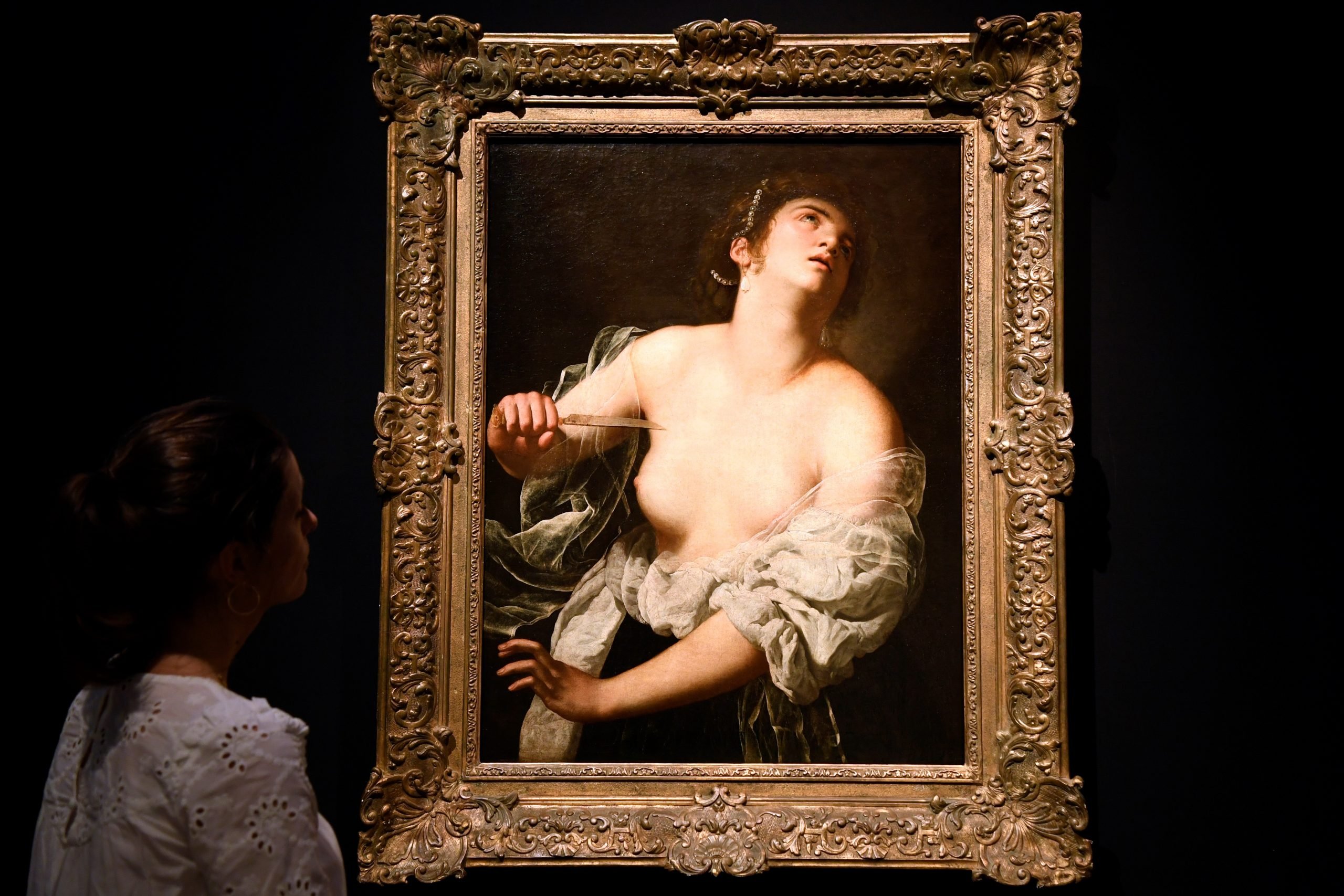
Artemisia Gentileschi is one of the sole female painters of the post-Caravaggio Baroque period to receive sustained historical recognition—and now, the art market is catching up. The 17th-century female master established her reputation with dramatic paintings, many of which depicted and examined violence against women.
A recently unearthed painting by Gentileschi, titled Lucretia, fetched nearly €4.8 million ($5.28 million) in Paris yesterday—yielding six times the €800,000 high estimate originally set by auction house Artcurial. It’s a new record for the artist, whose previous auction high stood at €2.8 million (roughly $3 million) for a painting of St. Catherine that was sold in 2017.
There are only some 60 known Gentileschis, so her work has rarely come up at auction. But a number have surfaced in recent years as interest in her work, and the work of overlooked female Old Masters more broadly, has grown.
Lucretia portrays an ancient Roman noblewoman and rape victim in the moments just before killing herself via a self-inflicted dagger wound. The work only recently came to prominence when it was identified in a private collection in Lyon, France, where it had been stored for 40 years.
In a joint statement, Matthieu Fournier, director of the department of Old Masters at Artcurial, and art expert Eric Turquin described the painting as “worthy of the great museums of the world,” adding that it “comes to us in an exceptional state of conservation.”
Gentileschi’s perhaps best-known work is Judith Slaying Holofernes (1610), housed in the Uffizi Gallery in Florence; that canvas depicts an Old Testament story in which Holofernes is beheaded by biblical heroine Judith. Guardian critic Jonathan Jones has described the artist’s oeuvre as “more savage than Caravaggio,” and dubbed her a feminist before her time: “With words and images, she fought back against the male violence that dominated her world.”